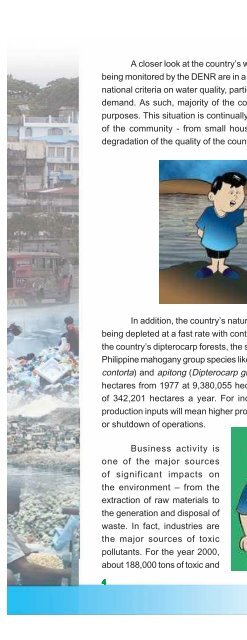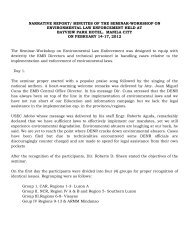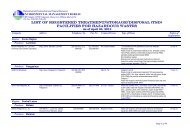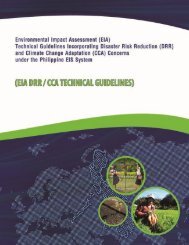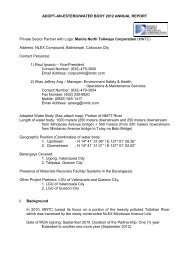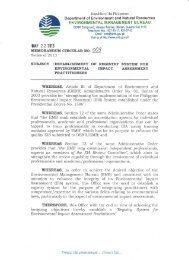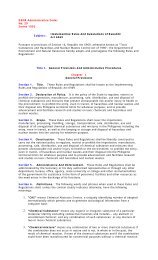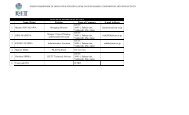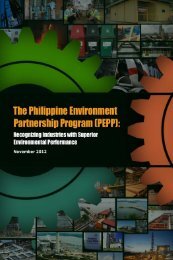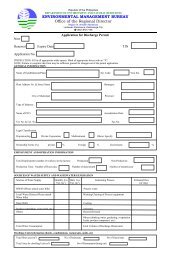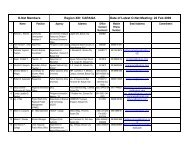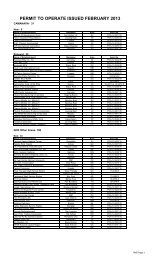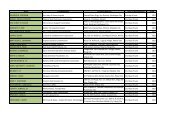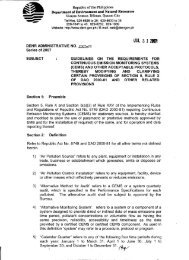G - Environmental Management Bureau
G - Environmental Management Bureau
G - Environmental Management Bureau
You also want an ePaper? Increase the reach of your titles
YUMPU automatically turns print PDFs into web optimized ePapers that Google loves.
A closer look at the country’s waterways reveals that about 15% of the water bodies<br />
being monitored by the DENR are in a disturbing state of organic pollution - having failed the<br />
national criteria on water quality, particularly on dissolved oxygen and biochemical oxygen<br />
demand. As such, majority of the country’s water bodies cannot be used for household<br />
purposes. This situation is continually being aggravated by various activities of all sectors<br />
of the community - from small households up to big factories - that contribute to the<br />
degradation of the quality of the country’s water resources.<br />
In addition, the country’s natural resource stock, a major source of raw materials, is<br />
being depleted at a fast rate with continued utilization, especially by industry. For instance,<br />
the country’s dipterocarp forests, the source of the economically and ecologically important<br />
Philippine mahogany group species like red lauan (Shorea negrosensis), white lauan (Shorea<br />
contorta) and apitong (Dipterocarp grandifflorus) have already decreased by 6.84 million<br />
hectares from 1977 at 9,380,055 hectares to 1997 at 3,536,017 hectares or an average<br />
of 342,201 hectares a year. For industries, depletion of local resources essential as<br />
production inputs will mean higher procurement costs or, in case of unavailability, delays on<br />
or shutdown of operations.<br />
Business activity is<br />
one of the major sources<br />
of significant impacts on<br />
the environment – from the<br />
extraction of raw materials to<br />
the generation and disposal of<br />
waste. In fact, industries are<br />
the major sources of toxic<br />
pollutants. For the year 2000,<br />
about 188,000 tons of toxic and<br />
4


